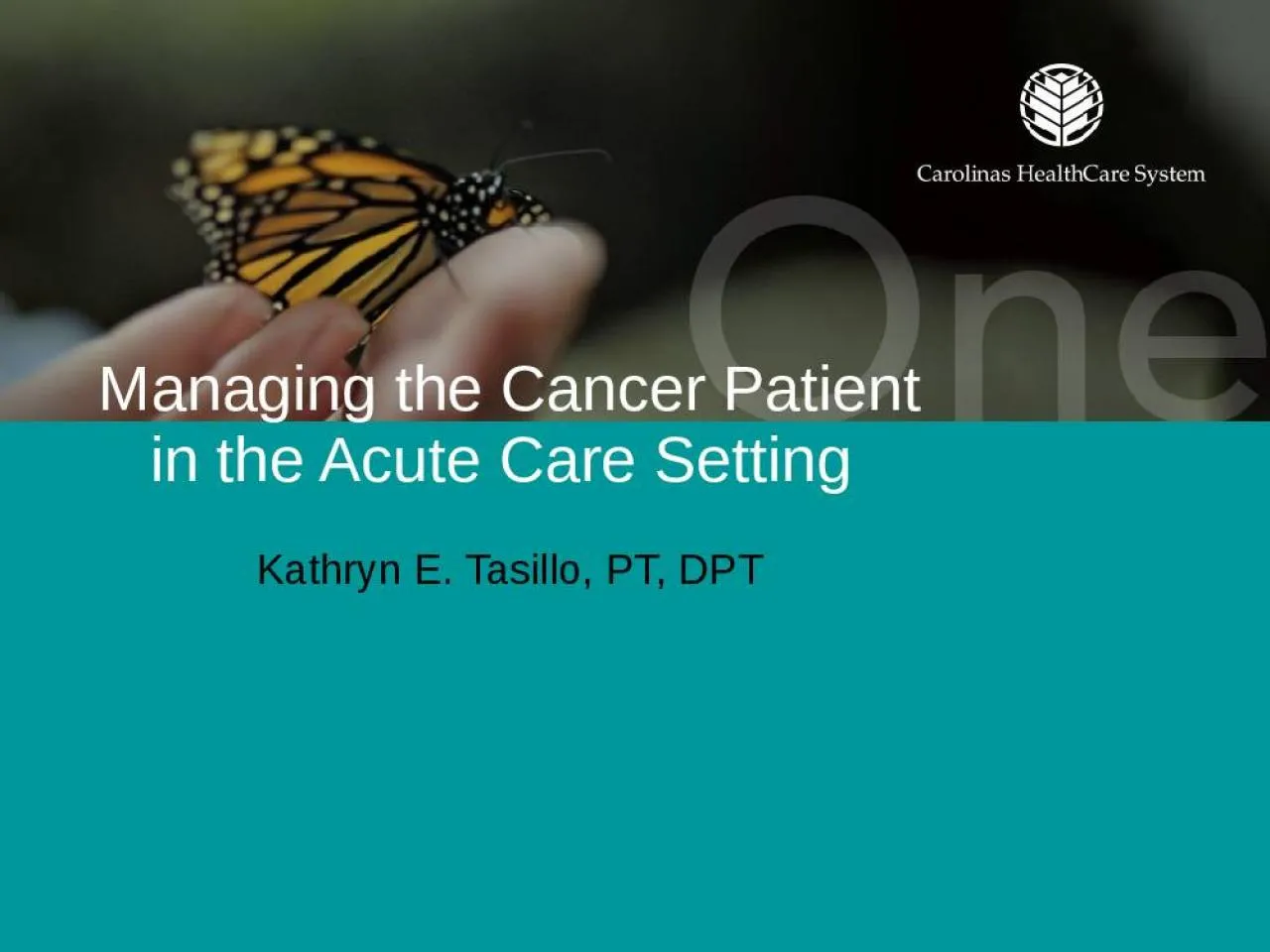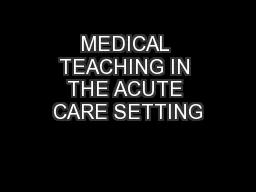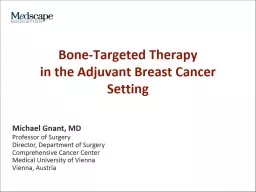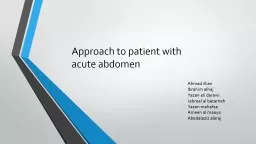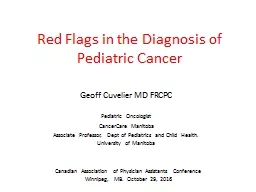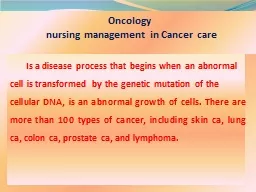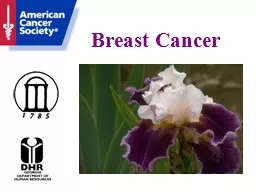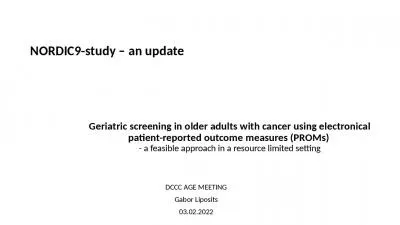PPT-Managing the Cancer Patient in the Acute Care Setting
Author : pagi | Published Date : 2022-04-07
Kathryn E Tasillo PT DPT Disclosure There is no relationship that could reasonably by viewed as creating a conflict of interest or the appearance of a conflict of
Presentation Embed Code
Download Presentation
Download Presentation The PPT/PDF document "Managing the Cancer Patient in the Acute..." is the property of its rightful owner. Permission is granted to download and print the materials on this website for personal, non-commercial use only, and to display it on your personal computer provided you do not modify the materials and that you retain all copyright notices contained in the materials. By downloading content from our website, you accept the terms of this agreement.
Managing the Cancer Patient in the Acute Care Setting: Transcript
Download Rules Of Document
"Managing the Cancer Patient in the Acute Care Setting"The content belongs to its owner. You may download and print it for personal use, without modification, and keep all copyright notices. By downloading, you agree to these terms.
Related Documents

